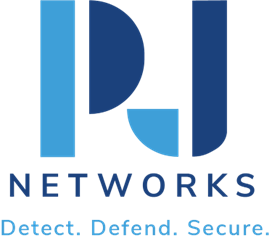Mastering Cybersecurity for Business: Validate JSON Like a Pro
In the realm of business technology, cybersecurity isn’t just an IT issue—it’s a business priority. As an expert in both SEO and cybersecurity, I want to talk about a specific element of cybersecurity for businesses that often gets overlooked: JSON structure validation. Knowing how to validate JSON can help boost your business’s cybersecurity posture and pave the way to safer data transactions.
Why JSON Validation Matters for Cybersecurity
Think of JSON (JavaScript Object Notation) as the language your data speaks. Businesses use it to transfer data between servers and web applications. So, why am I talking about validating it? Because poorly structured JSON can expose vulnerabilities that hackers exploit.
- Prevent Security Breaches: Proper JSON validation acts like a firewall.
- Enhance Data Integrity: Keep your data consistent and accurate.
- Boost Efficiency: Valid JSON structures mean smoother operations.
How to Validate JSON Like a Cyber Pro
Often, JSON structures break due to syntax errors. Let me take you through the process you should follow to validate JSON the correct way:
1. Know Your JSON Syntax
For starters, ensure you’re familiar with JSON syntax. JSON is simpler than other data formats, but that doesn’t mean it’s error-free. Familiarize yourself with its basic rules.
- Use curly braces for objects.
- Use square brackets for arrays.
- Always enclose keys and string values in double quotes.
- Separate key-value pairs with a colon and items with a comma.
2. Validate JSON Structure
It’s crucial to ensure the JSON format is right. Incorrect JSON can be a gateway for cyber-attacks. Check these points:
- Validate the JSON structure to follow proper syntax.
- Use online JSON validators to catch errors.
- Pay special attention to arrays and nested objects.
3. Remove Line Breaks and Extra Spaces
Extra spaces and line breaks can lead to vulnerabilities. Be diligent:
- Remove any line breaks within string values. It keeps the JSON cleaner.
- Check for unwanted spaces between brackets and braces.
4. Automate the Validation Process
Let’s face it—we’re all busy. Automation tools can scan and validate JSON with no extra sweat:
- Implement a linting tool to automate JSON structure validation.
- Use IDE plugins that automatically detect and correct errors.
5. Consistent Testing
Consistent validation is key. Regularly test and re-test your JSON data to keep everything secure.
- Make it a part of routine security checks.
- Set up a scheduled automated test to validate JSON in systems handling critical data.
Beyond JSON: Other Cybersecurity Tips for SMBs
While keeping your JSON secure is important, it’s just one link in the cybersecurity chain. Here are some other aspects to consider:
- Secure Your Networks: Make them hard to breach.
- Employee Education: Train the team to recognize and avoid Cyber threats.
- Regular Software Updates: Always use the latest versions for security patches.
- Endpoint Security: Keep your device defenses robust and up-to-date.
Bringing It All Together
You see, mastering JSON validation is not just for coders. It’s a daily life skill for modern businesses pivoting in the cyber ecosystem. Think of it as a small, dedicated effort with big, significant rewards: a secure data environment and also an efficient one!
Cybersecurity isn’t a luxury or a brand image—it’s a necessity for business success. So make sure your JSON structure is validated, line breaks sanitized, and your security protocols robust and astute. Your data and business depend on it.
Master your cybersecurity efforts and take a step towards business safety by learning how to validate JSON structures. Make sure your data remains secure to protect your business integrity and efficiency.
